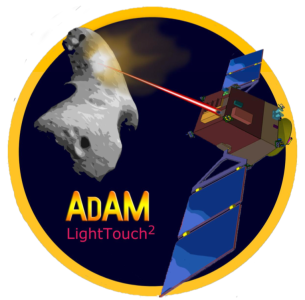Contactless asteroid orbit modification system Light touch2

The Light Touch2 concept proposes the use of laser ablation to change the orbital velocity of a 4m, 130 ton, asteroid by 1m/s in less than 3 years A laser beam is used to sublimate part of the asteroid material and generate a low and continuous thrust. This study demonstrates how to implement this concept on a medium class interplanetary spacecraft, here called AdAM (Asteroid Ablation Mission).
Methodology
The study presented an analysis of laser ablation for asteroid deflection proposing a simple one-dimensional model of the ablation process and the generation of the thrust. From this model, an analysis of the achievable momentum coupling Cm is presented. The momentum coupling is defined as the ratio between the achievable thrust and the power input to the laser. A second analysis showed the mass efficiency defined as the required mass of the deflection system (laser and associated power and thermal system) to produce a given thrust. The definition of the laser system included the optical system to focus and control the beam.
Starting from the definition of the laser and optical system, some requirements were derived on the navigation and control of the spacecraft in the proximity of the asteroid and on the size and characteristics of all the other subsystems on board the spacecraft. The small size of the asteroid and the fact that its ephemerides are not known with great accuracy required the definition of an advanced navigation strategy to detect, approach and rendezvous with the asteroid while simultaneously improving the knowledge of its ephemerides. Advanced GNC techniques were devised to control the spacecraft in the proximity of the asteroid during ablation and to measure the achieved deflection and modification of the rotational state of the asteroid.
The design of the spacecraft followed Astrium’s principles of system engineering, maximising the reliability and robustness, demonstrating that the mission is feasible with current technology.
